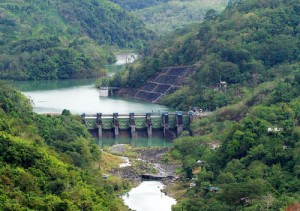 A water shortage could grip Metro Manila because of the dropping water level at Angat Dam and the specter of El Niño whose effects will be felt in the country beginning next month.
A water shortage could grip Metro Manila because of the dropping water level at Angat Dam and the specter of El Niño whose effects will be felt in the country beginning next month.
As of Saturday morning, the level at the dam in Norzagaray town, Bulacan province, which supplies almost 90 percent of the metropolis’ water needs, was 182.79 meters. On May 1, it was 183.62 meters. Angat’s normal level is 212 meters.
With an evaporation rate of 0.30 meters daily, the weather bureau worries that the dam could dip below the critical 180-meter mark within the week.
Of all the dams in Luzon, Angat has the lowest level. Aside from Angat, Metro Manila draws its water supply from La Mesa and Ipo reservoirs.
Water from these dams is processed by the La Mesa and Balara Treatment plants.
Angat’s lowest level was 157.76 meters in 2010 when the country went through an El Niño episode.
Officials of the Philippine Atmospheric, Geological and Astronomical Administration (Pagasa) are keeping a close eye on the dam levels in Luzon as another El Niño episode is expected to start in June.
The coming El Niño could last until the third quarter of 2015. If it becomes severe, Pagasa could launch cloud seeding operations.
If Angat’s level falls to 180 meters, dam officials will suspend supplying water for irrigation, according to Angat manager Rudy German. If it reaches 160 meters, rationing may be ordered by the National Water Resources Board (NWRB).
Flood Forecasting and Warning System hydrologist Sonia Serrano said the evening downpours in some parts of Metro Manila in the past days were not enough to replenish the water in the dams that had evaporated.
Last week, the level at La Mesa dam slightly decreased to 78.63 meters from 78.66 meters. The dam’s normal level is 80.15 meters.
Serrano said the agriculture sector will be the first to suffer once dams reach critical levels.
“Mitigation and cloud seeding will be conducted and water for irrigation will be lessened,” she added.
Pagasa weather forecaster Gladys Saludes meanwhile said rains will be more frequent this month as the country moves from summer to the rainy season.
Science Secretary Mario Montejo earlier called on Metro Manila residents to conserve water in the face of the coming El Niño.
Contingency measures
Malacañang on Saturday said the government has contingency measures to address the El Niño phenomenon.
In an interview over dzRB Radyo ng Bayan, Presidential
Communications Operations Office Secretary Herminio Coloma Jr. said one of the pillars of the Philippine Development Plan is climate change adaptation and mitigation, and this includes government’s response to El Niño and La Niña episodes.
The Aquino government acknowledges that climate change is a global reality and nations must prepare for it, Coloma said.
“That is why in January, when the President met with members of his Cabinet, he said that we should always be ready to any scenario,” he said.
Coloma said the government is doing everything to mitigate El Niño’s impact especially on agriculture.

